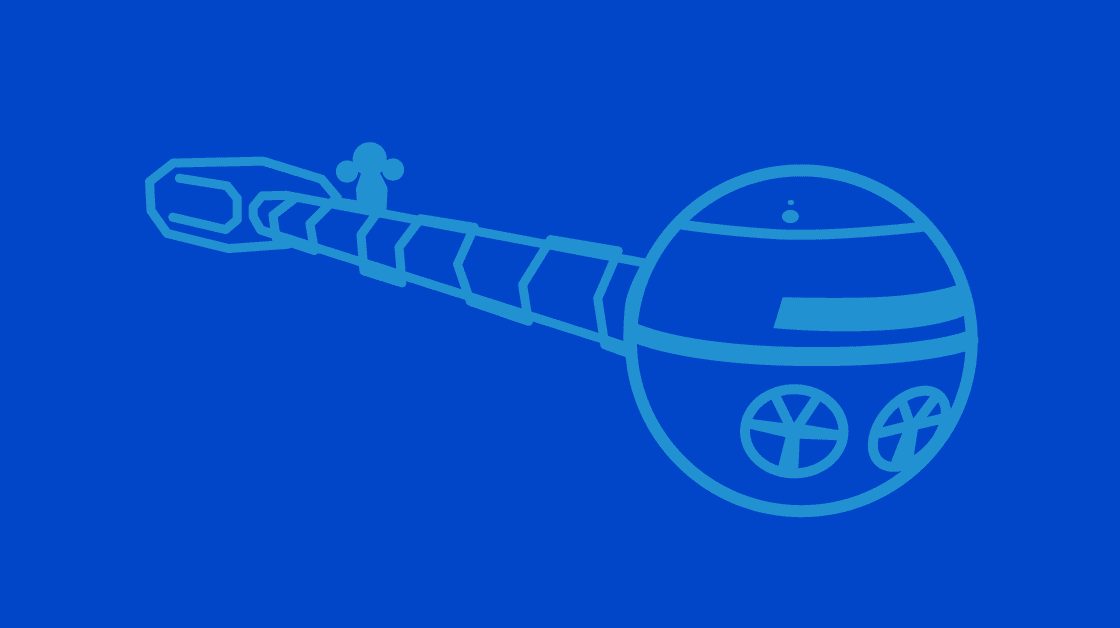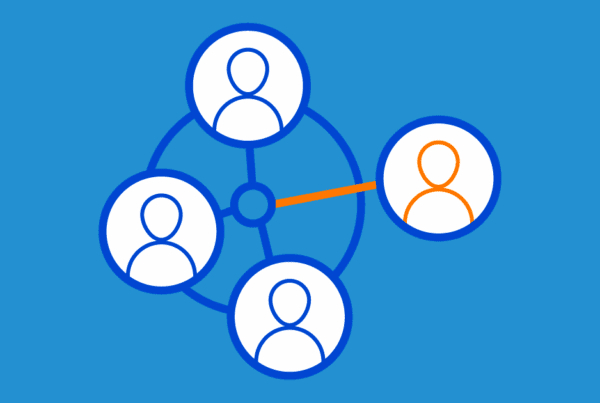
In a world where technology has rewritten the rules of our daily lives… Okay, now, go ahead and re-read that first line in your best movie-trailer-announcer voice.
Technology is a catalyst for change. Devices and apps have updated how we interact with our workplace and with each other. Predominantly, the modern blend of hardware and software is working to simplify tasks, reduce redundant chores, and make access to information – and each other – easier. Technology is everywhere.
It wasn’t always this way. You don’t have to have a birthdate pre-1980 to remember a technology-free time. I’m not talking about the age of the caveman, but the good old days of mixed tapes and CDs, when you stored a bike in a garage rather than using an app to activate a bicycle for charge-by-the-minute pricing. You may have stories of riding in taxis or staying in hotels instead of sharing people’s cars or homes. You may even remember a time when going to work meant leaving home and going to an office – with actual co-workers, not in your basement.
Technology has changed much of our lives, and while the similarities to a Kubrickian monolith may be too on the nose, let’s indulge. In 1968, Stanley Kubrick gave us his visionary film “2001: A Space Odyssey,” in which a large enigmatic black slab appeared at pivotal moments in human history. This monolith serves as a symbol of transformation and advancement, and while a mere fictional cinematic creation, it offers a compelling analogy for our own modern era of technological innovation. Just as the monolith acted as a catalyst for growth and change in the film, our relentless pursuit of technological advancement has reshaped the course of human history outside of the silver screen and throughout our workspaces.
- Boundaries of Potential: The monolith symbolized the dawn of human intellect, prompting the pursuit of knowledge. Similarly, our technological tools have empowered us to explore new frontiers of workplaces, science, medicine, and space exploration. We may find ourselves, at times, terrified, mortified, petrified, or stupefied, but modern technology is pushing the boundaries of human potential.
- Acceptable & Unacceptable Moral Dilemmas: The cinematic “2001” explored the ethical implications of technology, especially in the form of HAL 9000, the 60s embodiment of what technology and AI was predicted to be like. In our world, we grapple with questions about privacy, surveillance, and the consequences of unchecked innovation. While we contemplate that privacy, we reflexively speak into thin air and ask today’s digital assistants to check the weather, give us directions, or initiate phone calls. Hey, Siri… Google… Alexa… And over the last 12 months, we’ve seen ourselves willingly chat GPT’ing and giving our personal info to systems of complex algorithms. All without a second thought towards data sharing.
- The Human Touch: While technology has brought about remarkable progress, it has also raised concerns about the loss of our human connection. We must balance our quest for advancement with a deep appreciation for the emotional and social aspects of our lives.
Deep Impact
In Kubrick’s “2001,” the monolith first appears to a group of primitive hominids, sparking a profound transformation. It serves as a tool, both literally and symbolically, as it inspires the use of bone as a weapon. This newfound tool changed the trajectory of early humans, granting them an evolutionary advantage. Similarly, the monolith’s appearance marked a pivotal point in human history, symbolizing the birth of intellect, reason, and the desire to explore the cosmos. While life will go on and we will prevail, it might be argued that we all have mini-monoliths in our own lives, technology that serves as communication devices, calendars, and digital assistants.
Short Circuit
Our contemporary world is marked by a relentless surge of technological advancements that can be likened to the monolith’s influence on early humanity. Unlike the primitive hominids who encountered one giant monolith, we are surrounded by an ever-evolving landscape of tools and innovations that are redefining how we live, work, and communicate. In our quest for more input, one item more than any other could be defined as our monolith, and rather than standing tall and looming over us, it is a handheld device with a screen; we slide it into our pocket and bring it with us everywhere. With it, we hold a bevy of tools; without it, we frequently feel there’s a short circuit in our lives, a missing piece.
Field of Dreams
In 1968, Kubrick’s vision of the future was lauded as conceptualized high-art fiction or panned as unattainable futuristic nonsense. Either way, some argue the film offered a field of dreams that has inspired Hollywood for generations. Others claim it accurately predicted many advancements that have arrived since its premiere.
Current cinematic releases contain several mundane but technologically advanced items. Rather than being archetypal tropes, these items are simply plucked from everyday life: tablet computers, flat-screen monitors, wireless communications devices, space exploration, and artificial intelligence. Each was fiction in 1968, and while these items were not all available in the real 2001, they were all readily accessible before we flipped our collective calendars to 2023. We just don’t recognize life’s most significant moments while they are happening. Today’s films may have modern gadgetry used throughout their scenes, but they are frequently less predictive than the forward-thinking commentary on technology, workplaces, and relationships created in the fictional 2001 by Kubrick and co-author Arthur C. Clarke.
Much like the plot of any modern big-budget cliffhanger puts us on the edge of our seats, technology has turned what we once treated as standard on its head and has everyone waiting to see what’s next. What used to be the stuff of fiction, art, or dreams is now our reality. From video content being wirelessly delivered directly into our living rooms, everything from groceries to automobiles being selected and purchased from miles away and then effortlessly dropped off to our driveways, and office messages displaying instantly to our handheld screens worldwide, technology is our reality and tools like our phones and apps are mainstays of our lives, the global marketplace, and the way we work.
All That Jazz
Through technology, innovation has decentralized many facets of employment and shifted the concept of “workplace.” Even a handful of years ago, the term “gig economy” was reserved for traveling musicians and one-night jazz performances. Today, 1 in 3 U.S. workers have engaged in some form of gig work, so the spotlight is on flexibility. For most, flexibility comes in the form of remote work — a phenomenon that has ushered in a breed of professionals known as flexible talent, or as they’re more commonly referred to, freelancers. These individuals universally shouted, “It’s showtime, folks!” and have taken the gig economy by storm, redefining how we approach work, where we work, and when we work.
However, the tantalizing freedom of working from any corner of the globe comes intertwined with a web of complexities and challenges. The realm of remote work is deep, dynamic, and nuanced; it offers a myriad of benefits directly alongside several intricate difficulties — like the protagonist in an epic film, there are plot twists and challenges for the freelancer who enters the fray of this brave new world.
Taken
When looking at flexible talent, it is easy to focus on just the individual with one set of skills – a very particular set of skills, skills acquired over a very long career, or perhaps through education or experience. This singular view focuses on the person as one thing, but with the freedom of freelance comes a myriad of other requirements, tools, and secondary skills. The freelancer’s main talent may be center stage, but much like a cinematic project with scripts, sets, stunts, and stand-ins, freelancers must have supporting elements to succeed.
The Good, The Bad, and The Ugly
Flexible talent works hard but also works wise. Most contract workers know that while you work for a living, you don’t have to kill yourself working, so they find ways to streamline their efforts and find the support they need. That support comes in the form of tools, tech, gig sites, and sometimes other freelancers. Let’s explore some aspects that create freelance work’s challenges and successes of freelance work.
- The Unshackling of Autonomy: Imagine a workspace not dictated by the humdrum of office norms but by your inner rhythms and preferences. That’s the realm remote work brings to freelancers—a world where autonomy reigns supreme. For those traversing the winding paths of the gig economy, autonomy is a beacon of empowerment. It empowers them to curate their workdays to align with their peak productivity hours, ultimately resulting in work that is not just done but mastered. This heightened sense of control fosters a profound connection with their craft, spurring a cascade of job satisfaction that resonates far beyond the confines of a traditional office cubicle.
- Location Independence Day: No longer bound by the four walls of a corporate office, flexible talent has embarked on an odyssey of location independence. The allure of this concept isn’t just in the ability to craft presentations from a beachside cabana; it’s in the enrichment that stems from immersing oneself in diverse locales. Freelancers can now draw inspiration from the unexplored alleys of foreign cities, weave narratives influenced by different cultures, and infuse their work with a kaleidoscope of perspectives. This enhanced perspective, in turn, propels their creations to transcend the mundane, fostering a unique authenticity that is inherently human.
- The Marriage of Work and Life: What if work wasn’t a separate entity encroaching upon life but an integral part of it? Remote work has paved the way for a harmonious union between these two previously estranged domains. Freelancers, masters of their own destinies, have harnessed this potential, creating a synergy that benefits not just their careers but their holistic well-being. Liberated from the shackles of commute and office politics, they delve into a world where work and personal pursuits meld seamlessly, fostering a healthier mental equilibrium and a renewed sense of purpose.
- Connection and Solitude: Just as the monolith catalyzed a transformation in Kubrick’s “2001” Dawn of Man sequence, our technological advancements have sparked seismic shifts in society. The internet, for example, has democratized information, connecting people across the globe and revolutionizing industries. The web has forever changed the way we interact with one another and the way we approach and complete work. Even more than on-site employees, freelancers have harnessed the power of the internet to establish and maintain strong connections with their teams and their clients in unprecedented ways. Long before a global pandemic standardized some remote-work systems, platforms like email, instant messaging, and video conferencing had become indispensable tools for flexible talent to exchange ideas, discuss project details, and provide updates in real-time. This instant accessibility allows for seamless communication regardless of geographical distances, enabling freelancers to foster trust and build rapport with their clients even when they are continents apart.
Into the Wild
In a paradoxical twist, while the digital age has connected us globally, remote work can sometimes usher in an era of isolation, misunderstanding, and overwork. For freelancers accustomed to the banter of office camaraderie, the transition to a solo workspace can be akin to embarking on a solitary voyage. The pangs of loneliness can gradually erode motivation, siphoning away the enthusiasm that once fueled creativity. Freelancers have chosen experiences over careers, they aren’t destitute, they’re living like this by choice. The challenge lies in forging connections amidst the digital expanse, a task that requires intentional efforts to bridge the gap and combat the echoes of solitude.
Effective communication is the cornerstone of collaboration, yet remote work presents its own set of communication hurdles. The subtleties of body language get lost in translation, messages might be misconstrued in text, and time zones can turn synchronous communication into a juggling act. Freelancers must embrace an arsenal of digital tools and strategies to surmount these obstacles, transforming what could be barriers into bridges that facilitate symbiotic exchanges.
Sliding Doors
The autonomy that makes remote work liberating can also be a double-edged sword, blurring the boundaries between professional commitments and personal space. The demarcation between the two, once dictated by physical spaces, now necessitates meticulous self-regulation. Faced with daily decisions that could change the course of their entire day, freelancers must employ strategies for decision-making that ensure separation of work and life. Striking the balance is an intricate dance, requiring freelancers to consciously construct routines that delineate work hours from leisure, ensuring that the alluring flexibility doesn’t metamorphose into an endless loop of labor or a neverending coffee break.
The Hunger Games
As the gig economy continues its relentless evolution, the significance of remote work is poised to ascend. Freelancers volunteer as tribute and take the reins as the trailblazers of this revolution. Flexible talent bears the responsibility of steering the narrative toward a harmonious equilibrium. The key lies in harnessing the benefits while ardently addressing the challenges that unfurl in its wake. There will be a future workforce, and it will be remote.
Shared Plotlines
Freelancers are working harder than ever to ensure the best working conditions for themselves and for their peers. Some of the most challenging aspects of the gig economy show up in shared plotlines throughout the lives of contract workers.
- Connections in a Digital World: To counteract the specter of isolation, freelancers are pioneering virtual avenues of connection. Online communities, shared virtual workspaces, and digital networking events are breathing life into the virtual workplace, perpetuating a sense of camaraderie that transcends physical limitations.
- Carving Boundaries, Crafting Balance: In the age of remote work, the onus falls on the flexible talent to carve definitive boundaries. Designated workspaces, steadfast adherence to working hours, and conscious disconnection at day’s end lay the foundation for a healthy equilibrium, preserving the precious boundaries that shield freelancers from burnout.
- The Art of Amplified Communication: In the modern work world that focuses less on cubicles and more on remote collaboration, communication isn’t just a tool; it’s an art. Freelancers must learn to wield this art proficiently, leveraging virtual tools and practices that convert geographical distances into mere technicalities. Regular video check-ins, collaborative platforms, and emotive text can be the threads that weave a seamless tapestry of teamwork.
- Thriving Amidst Flux: The realm of remote work is a tapestry woven with the threads of change. As technologies evolve and trends shift, freelancers must remain agile, adapting to the winds of transformation. The willingness to learn, the enthusiasm to embrace the unknown, and the foresight to incorporate emerging tools are the traits that mark the flexible talent destined to thrive.
A New Dawn
The expanding universe of remote work has unleashed a revolution, with flexible talent at its forefront. The magnetic pull of its benefits is irrefutable, enticing freelancers with a realm of possibilities. Yet, it’s essential to grasp the complexities that accompany this transformation. By forging connections, setting boundaries, nurturing communication, and embracing change, freelancers can navigate the labyrinthine paths of remote work while harnessing its immense potential. As we stand on the cusp of a new dawn, the experiences of these trailblazers will continue to redefine the contours of work, bridging the chasm between the virtual and the profoundly human.
Like the fictional essence of the monolith and the discoveries it revealed in “2001,” our modern-day technological advancements are tools that stimulate growth and change. While the monolith symbolizes a singular moment of transformation, our contemporary world is characterized by a continuous stream of innovations that redefine our existence. As we navigate this ever-evolving landscape, it is imperative that we remain mindful of the profound impact these modern monoliths have on our lives and our workspace. Just as the hominids of “2001” reached for the stars, we, too, must strive to reach new heights while preserving the essence of our humanity amidst the digital revolution. In doing so, we honor the enduring spirit of growth and exploration that connects us to both our cinematic past and our technological future.
Chris is the President & COO of FlexTal. He brings 20+ years of experience in Customer Success, UI/UX, design, and marketing – including time within start-ups, agencies, and enterprise orgs. Chris has also served as a University adjunct professor in Advertising & Public Relations for several years.



